Abstract
Combined recordings of the electroretinogram (ERG) and the cortical visual evoked response (VER) have been made together with the electroencephalogram (EEG) in 16 children suffering from a `late infantile' form of `neuronal lipidosis'. The ERG was not usually recordable, in keeping with a gross loss of function of the retinal receptor elements. However, in all the 16 children, at whatever stage of the disease, a grossly enlarged VER was seen (some 12 to 20 times higher in amplitude than in a control group) and visible as a discharge on the primary EEG tracing. The first components of the VER were, however, of fairly similar wave form and latency to those seen in the control children. This unusual combination of ERG and VER findings together with the EEG features have not been found in other groups of diseases.
Full text
PDF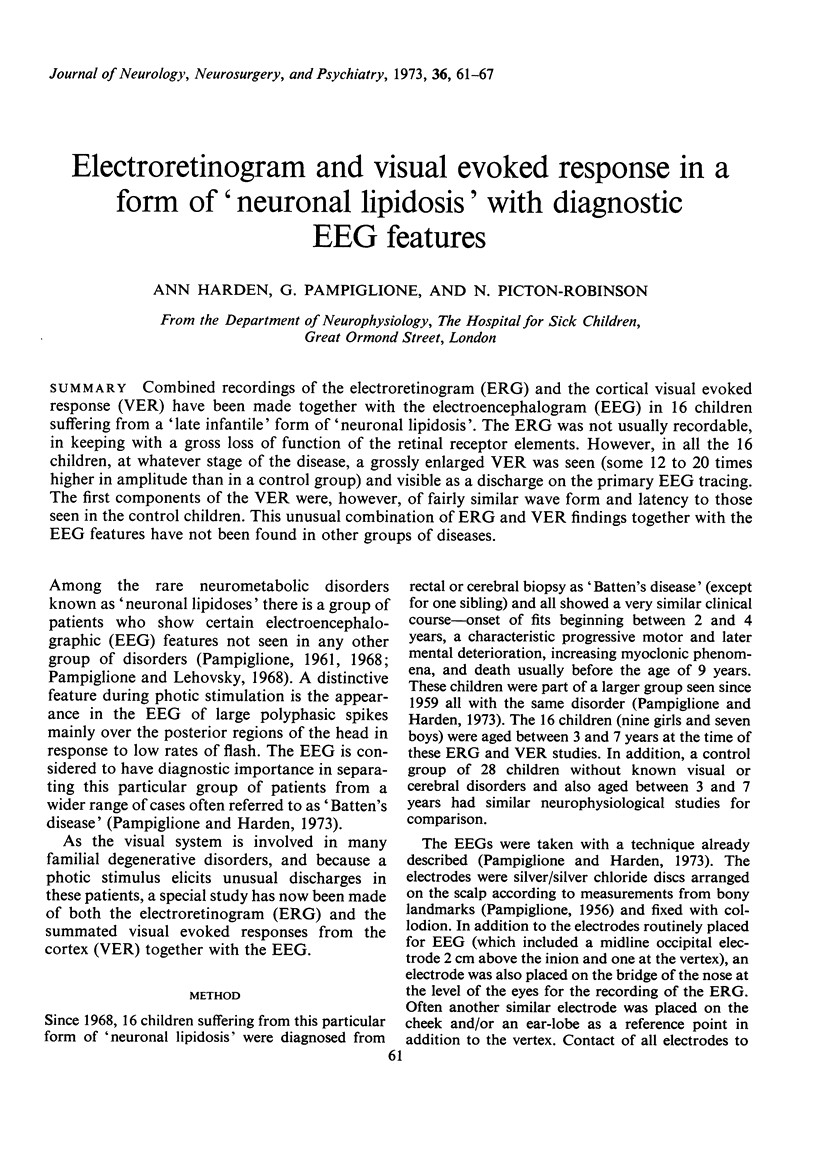
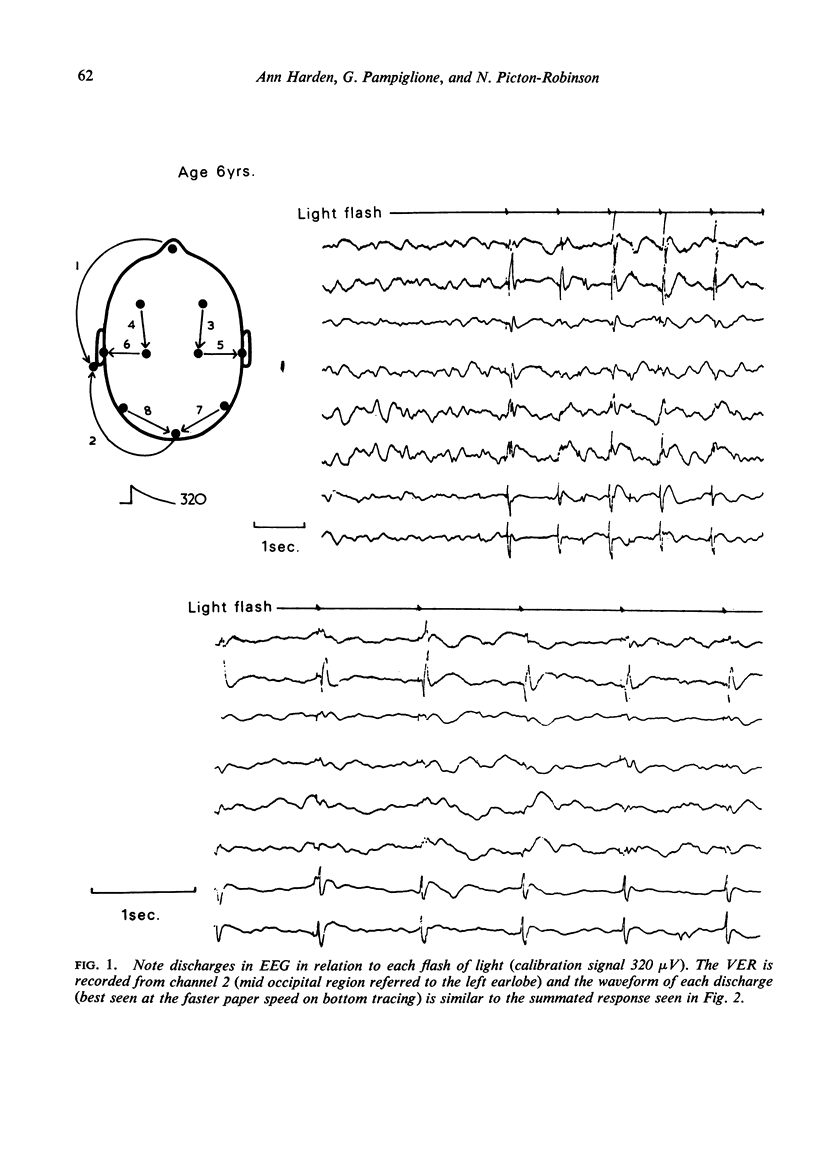
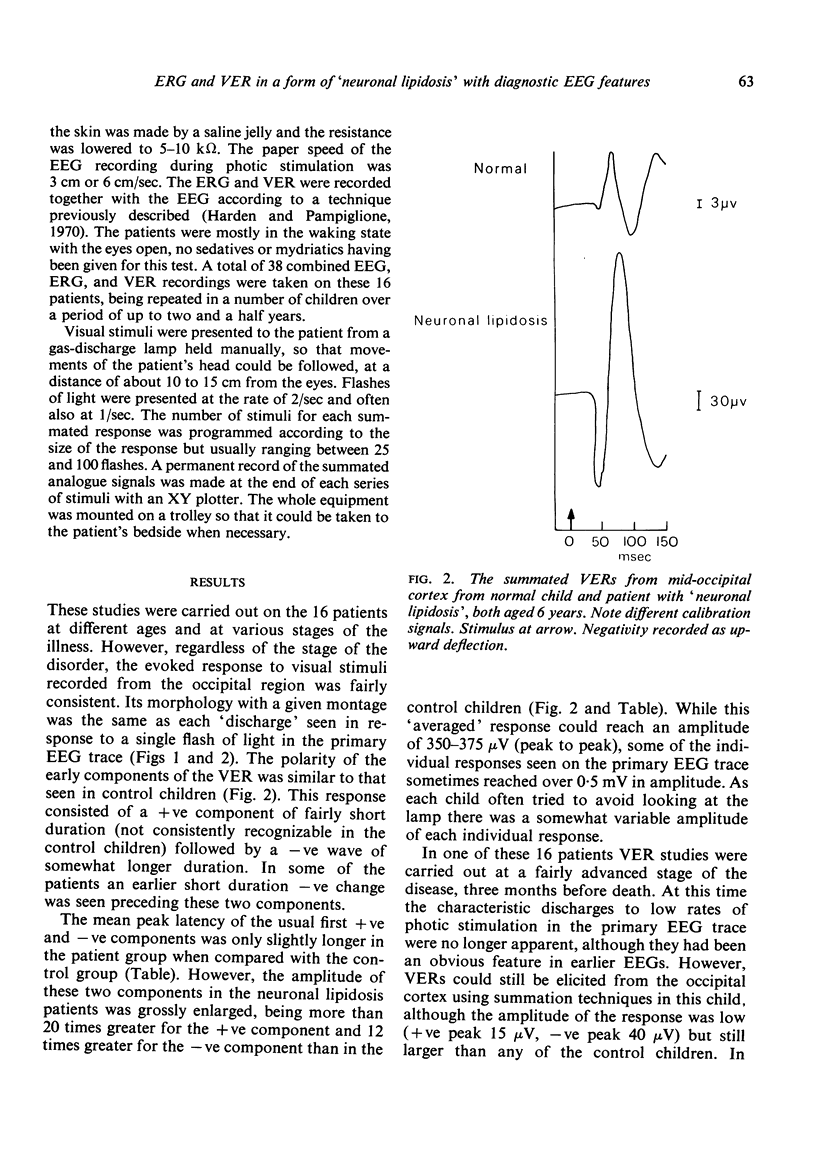
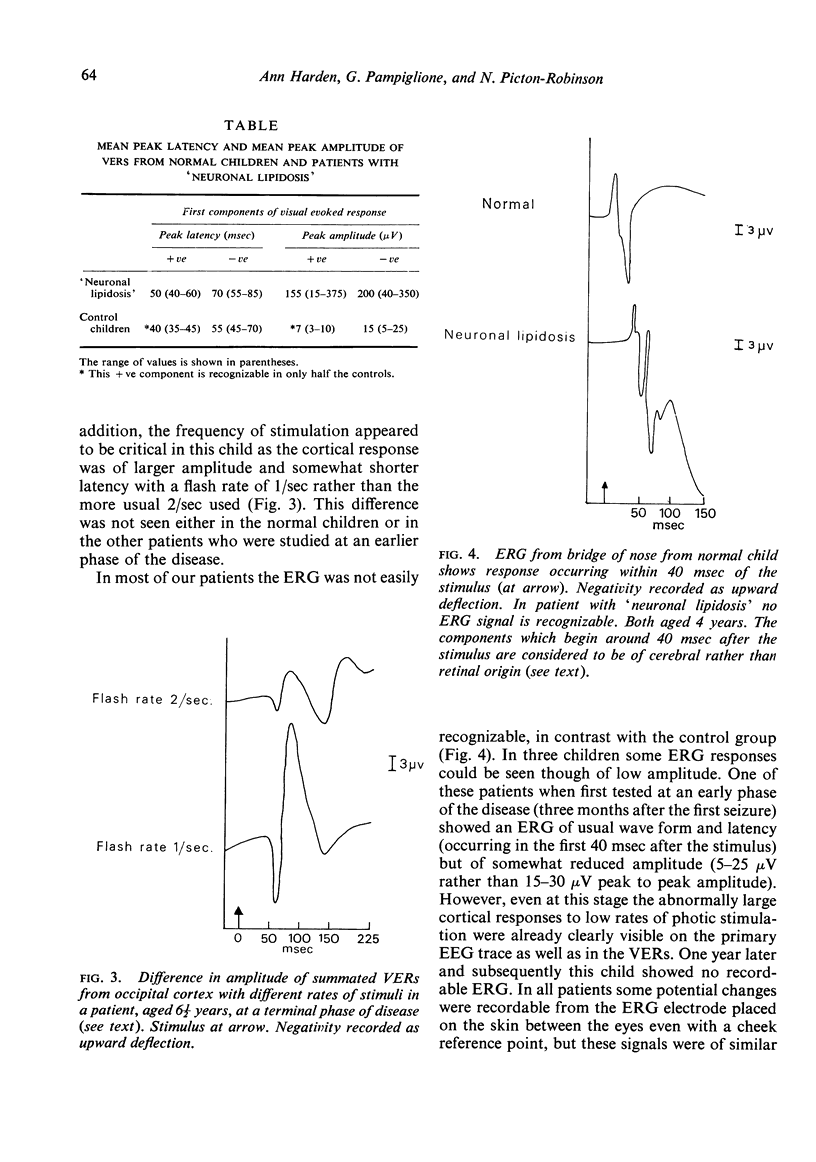
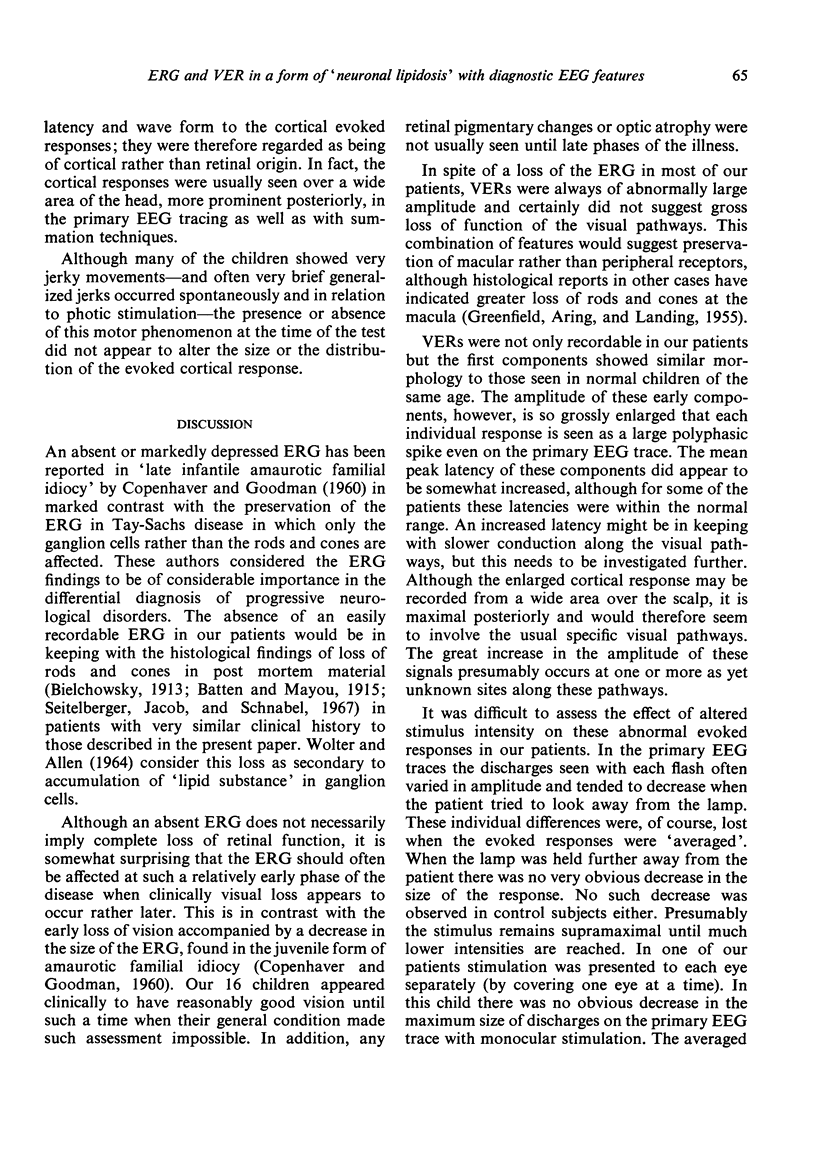
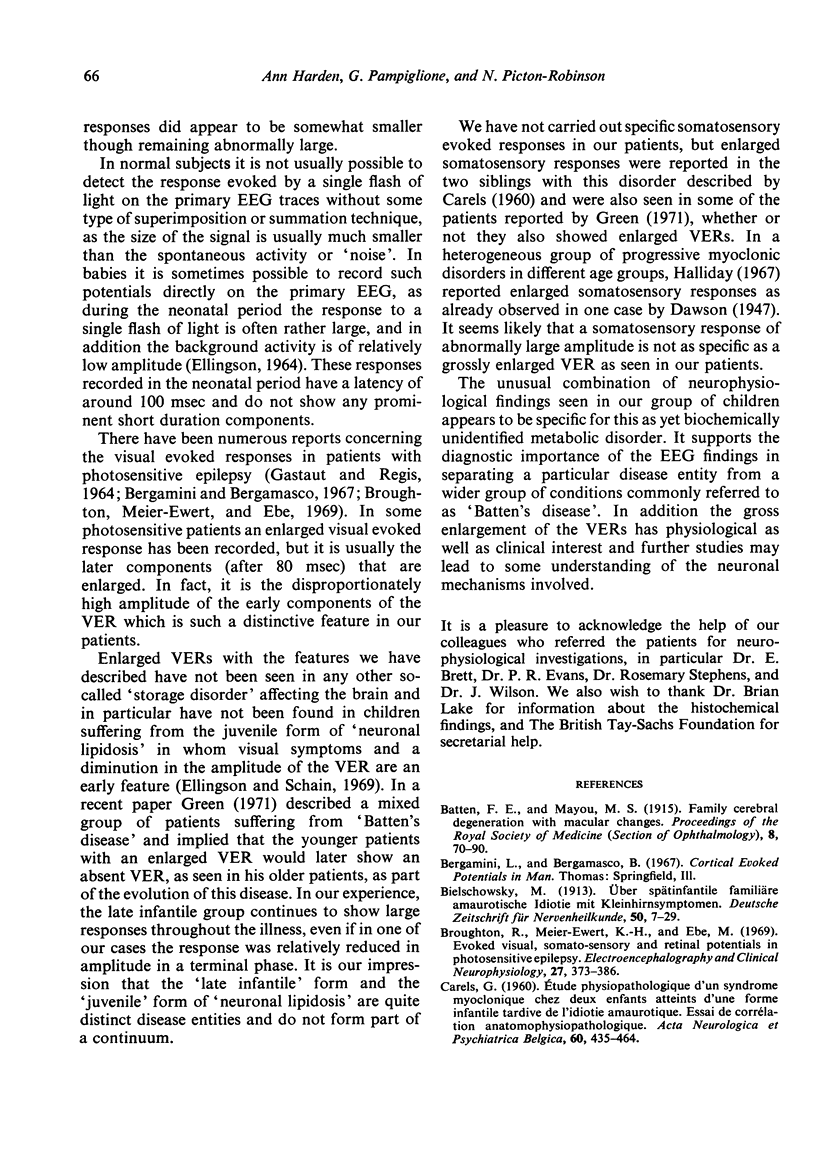
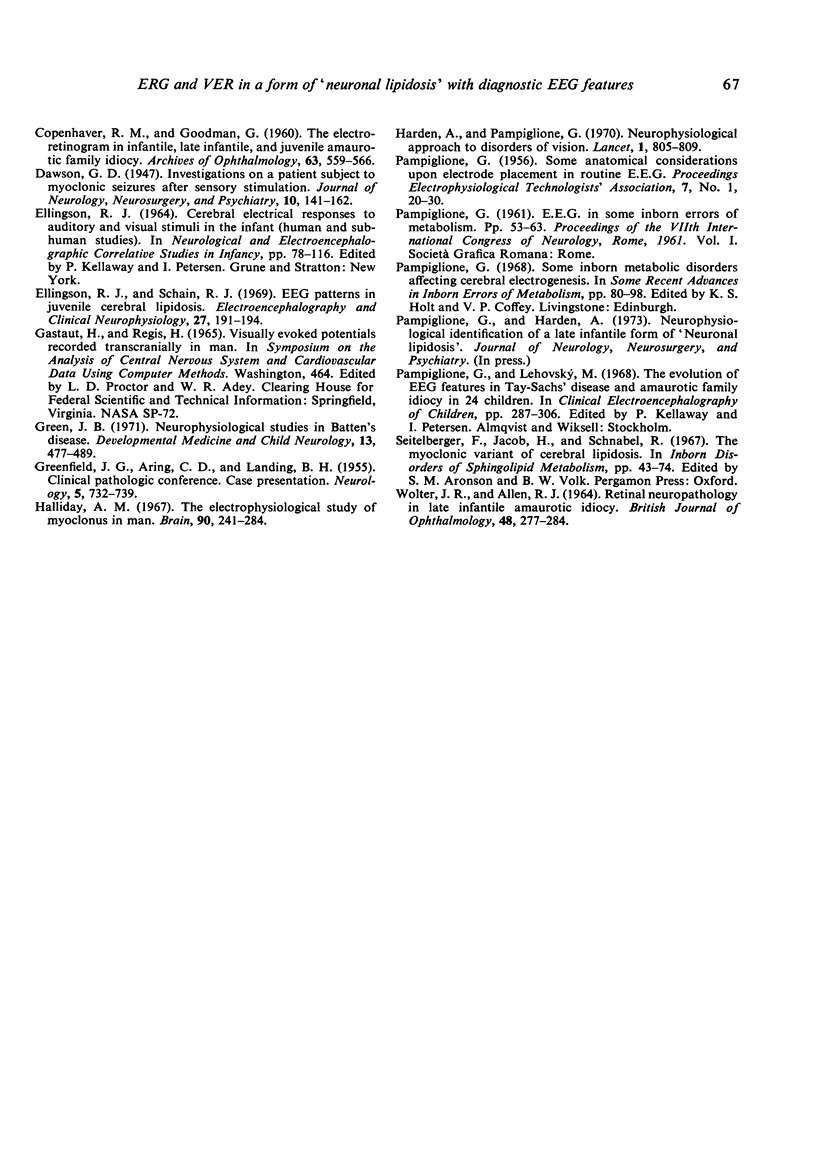
Selected References
These references are in PubMed. This may not be the complete list of references from this article.
- Batten F. E., Mayou M. S. Family Cerebral Degeneration with Macular Changes. Proc R Soc Med. 1915;8(SECT):70–90. [PMC free article] [PubMed] [Google Scholar]
- Broughton R., Meier-Ewert K. H., Ebe M. Evoked visual, somato-sensory and retinal potentials in photosensitive epilepsy. Electroencephalogr Clin Neurophysiol. 1969 Oct;27(4):373–386. doi: 10.1016/0013-4694(69)91446-1. [DOI] [PubMed] [Google Scholar]
- COPENHAVER R. M., GOODMAN G. The electroretinogram in infantile, late infantile, and juvenile amaurotic family idiocy. Arch Ophthalmol. 1960 Mar;63:559–566. doi: 10.1001/archopht.1960.00950020561014. [DOI] [PubMed] [Google Scholar]
- Ellingson R. J., Schain R. J. EEG patterns in juvenile cerebral lipidosis. Electroencephalogr Clin Neurophysiol. 1969 Aug;27(2):191–194. doi: 10.1016/0013-4694(69)90173-4. [DOI] [PubMed] [Google Scholar]
- GREENFIELD J. G., ARING C. D., LANDING B. H. Clinical pathologic conference. Neurology. 1955 Oct;5(10):732–739. doi: 10.1212/wnl.5.10.732. [DOI] [PubMed] [Google Scholar]
- Green J. B. Neurophysiological studies in Batten's disease. Dev Med Child Neurol. 1971 Aug;13(4):477–489. doi: 10.1111/j.1469-8749.1971.tb03054.x. [DOI] [PubMed] [Google Scholar]
- Halliday A. M. The electrophysiological study of myoclonus in man. Brain. 1967 Jun;90(2):241–284. doi: 10.1093/brain/90.2.241. [DOI] [PubMed] [Google Scholar]
- Harden A., Pampiglione G. Neurophysiological approach to disorders of vision. Lancet. 1970 Apr 18;1(7651):805–808. doi: 10.1016/s0140-6736(70)92409-8. [DOI] [PubMed] [Google Scholar]
- WOLTER J. R., ALLEN R. J. RETINAL NEUROPATHOLOGY OF LATE INFANTILE AMAUROTIC IDIOCY. Br J Ophthalmol. 1964 May;48:277–284. doi: 10.1136/bjo.48.5.277. [DOI] [PMC free article] [PubMed] [Google Scholar]


